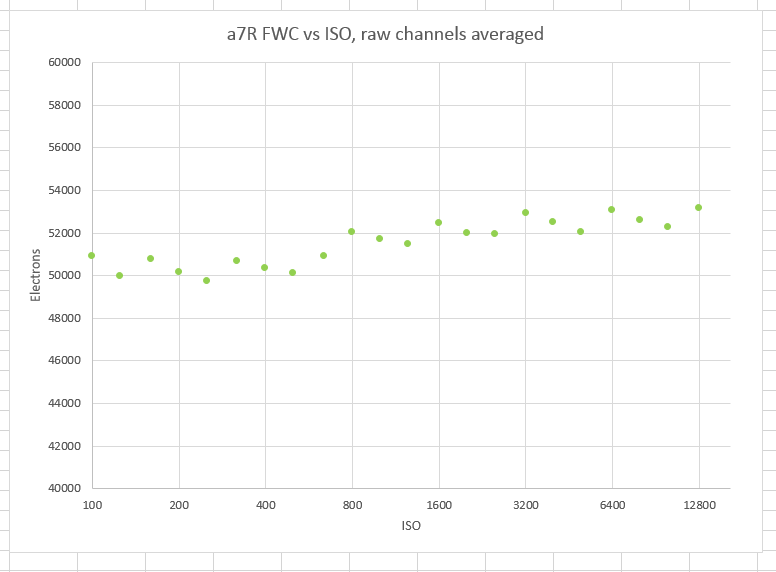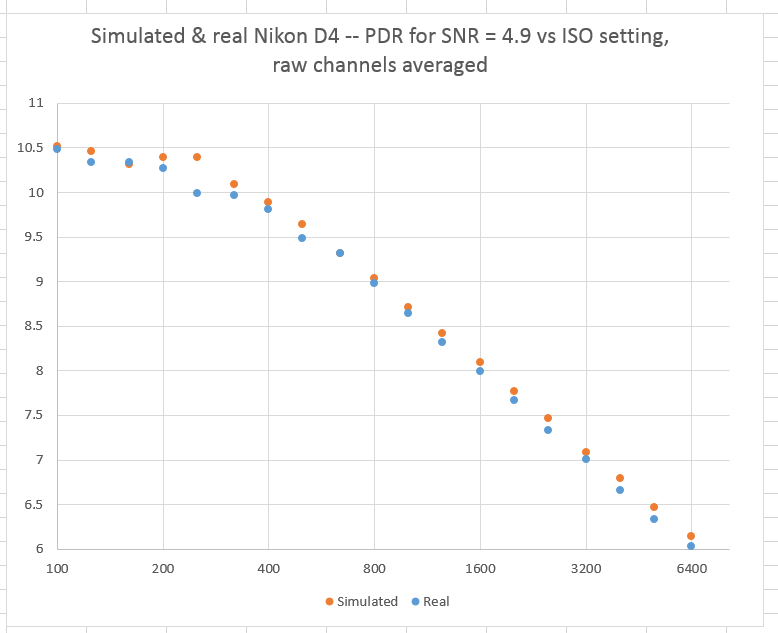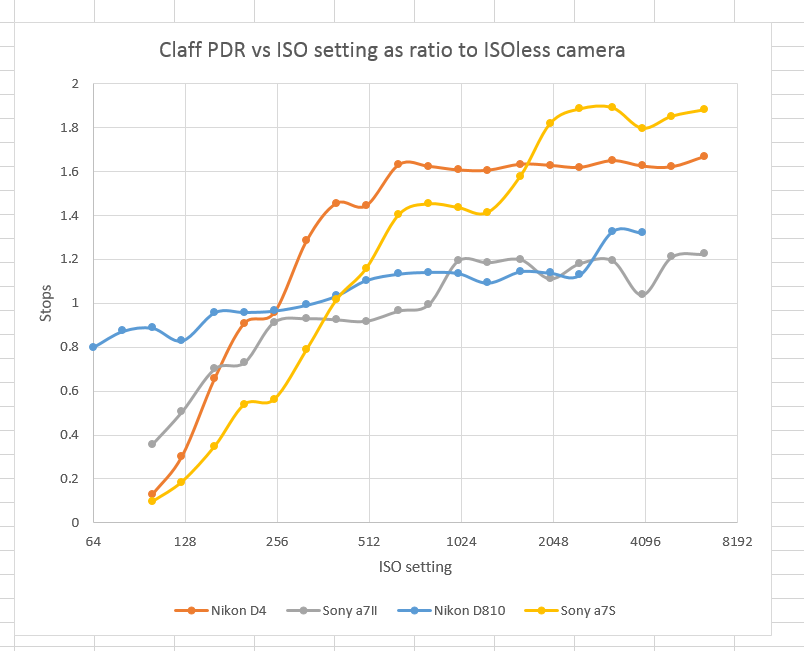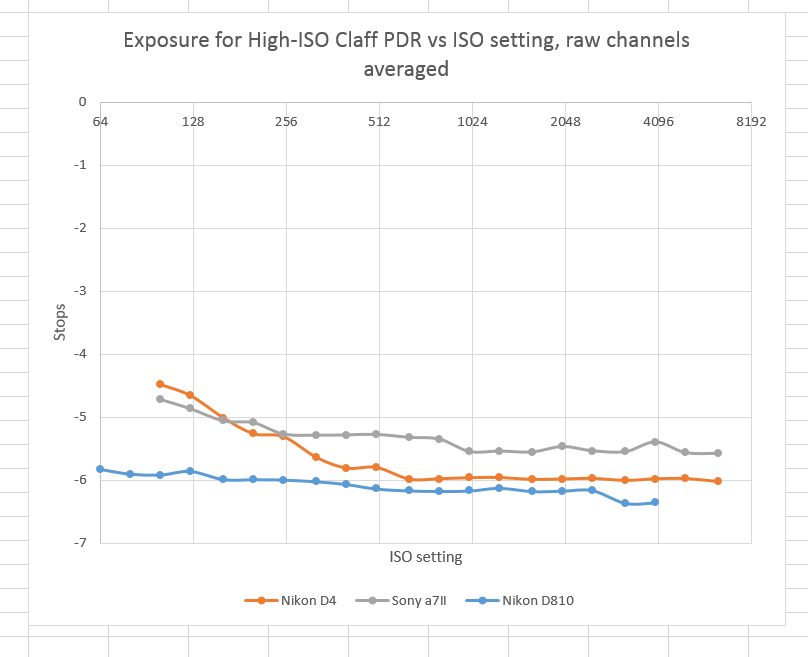I’ve received requests to compare the Sony a7R sensor to that in the Nikon D810. I’ll do that next time, but first I have to show you all an analysis of the a7R sensor itself. Here is the read noise versus ISO setting, with a separate camera model constructed for the data from each ISO. Only… [Read More]
Shutter shock revisited
From the mailbag: I see you have a Sony a7 II. Does the internal stabilization help with the shutter shake? The a7II doesn’t suffer from shutter shake, if you use electronic first curtain shutter. If you turn EFCS off, it does, but you only would do that if you were going to use a very high… [Read More]
Dynamic Range Comparisons with simulated cameras
In yesterday’s post, I speculated that the Claff Photographic Dynamic Range Curves created by by direct search might be smoother if the searched data set was from a simulated camera rather than a real one. I programmed up a Nikon D4 simulator that used the modeled read noise values from the data set. I picked… [Read More]
Photographic Dynamic Range comparisons
In the previous post, I modified BIll Claff’s photographic dynamic range criterion slightly, and used it to compare several cameras. Today, I’d like to add one more camera, the Sony alpha 7S, and compare the photographic dynamic range of all four vs ISO. The Claff SNRs (see here for explanation) of the four cameras are:… [Read More]
ISOlessness comparisons across resolutions
I left off yesterday’s post with two questions about comparing shadow noise performance of cameras with different resolutions: What should we pick for a common resolution, and what value should we pick for a barely-acceptable SNR? Thinking that I couldn’t be the first person to ask these questions, I thought to look around to see… [Read More]
- « Previous Page
- 1
- …
- 219
- 220
- 221
- 222
- 223
- …
- 384
- Next Page »



